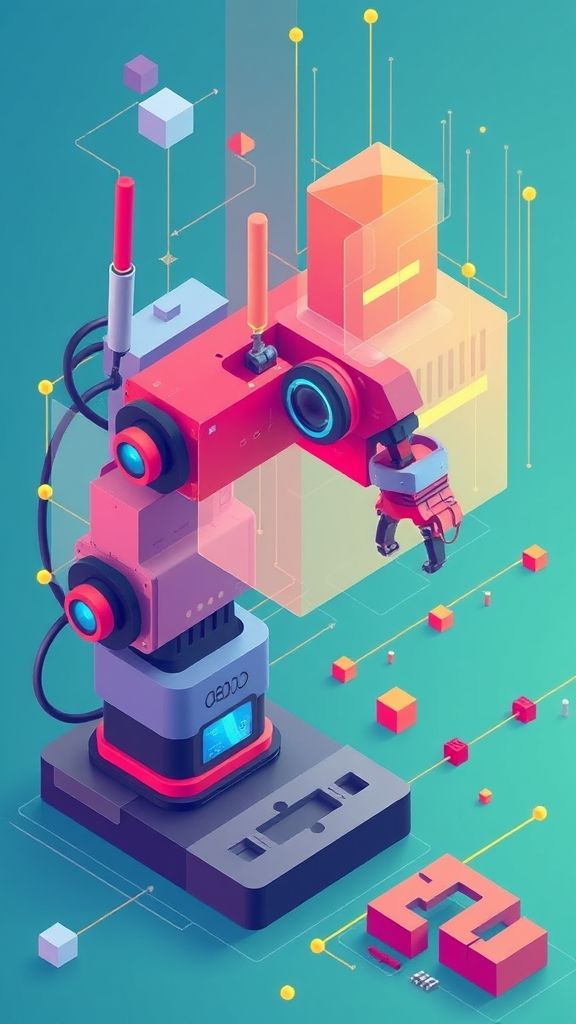Norway Paves Way For Future Warfare With Cutting-Edge Drone Swarm System
Norwegian Army Selects Valkyrie Drone Swarm from Six Robotics The Norwegian Army has selected the …
22. October 2025

The advent of open-source artificial intelligence models has revolutionized the field of robotics, enabling researchers and startups to experiment with smarter hardware for factories and warehouses. European roboticists have released a powerful open-source AI model that acts as a brain for industrial robots—helping them grasp and manipulate things with new dexterity.
Developed by researchers at the Institute for Computer Science, Artificial Intelligence and Technology (INSAIT) in Bulgaria, SPEAR-1 is a groundbreaking artificial intelligence model that differs from existing robot foundation models. It incorporates 3D data into its training mix, giving it an enhanced understanding of the physical world, making it easier to understand how objects move through physical space.
The concept of open-source language models has made it possible for researchers and companies to experiment with generative AI. Martin Vechev, a computer scientist at INSAIT and ETH Zurich, emphasizes the importance of open-weight models in advancing embodied AI. “Open-source models are crucial for advancing embodied AI,” he says ahead of the release.
SPEAR-1’s unique approach tackles the mismatch between the 3D space the robot operates in and the knowledge of the vision language model (VLM) that forms the core of the robotic foundation model. Existing robot foundation models, built on top of VLMs, have a broad but limited grasp of the physical world because training tends to come from labeled 2D images.
In contrast, SPEAR-1 is designed to incorporate 3D data into its training mix, enabling it to better understand the physical world and make more informed decisions about object manipulation. This innovative approach has significant implications for the development of smarter robots that can interact with their environment in a more sophisticated way.
SPEAR-1’s capabilities have been extensively tested on RoboArena, a benchmark that evaluates a model’s ability to get a robot to perform tasks such as squeezing a ketchup bottle, closing a drawer, and stapling pieces of paper together. The results show that SPEAR-1 is roughly as capable as commercial foundation models designed for industrial robots.
The commercial potential of generally capable robots has spawned well-funded startups, including Skild and Generalist, besides Physical Intelligence. These companies are investing heavily in the development of smarter robots that can operate in a variety of environments and perform complex tasks.
SPEAR-1’s significance extends beyond its technical capabilities, as it suggests that the quest to build more intelligent robots may involve both closed models like those from OpenAI, Google, and Anthropic, as well as open-source variants like Llama, DeepSeek, and Qwen. This diversity of approaches will be crucial in driving innovation and advancing the field of robotics.
However, robot intelligence is still in its infancy, and significant challenges remain. Training an AI model to operate a robot arm so that it can reliably pick certain objects from a table is one thing; however, retraining the model from scratch if a different kind of robot arm is used or if the object or environment are altered is another story altogether.
The development of more sophisticated robot intelligence will require significant advances in areas such as machine learning, computer vision, and robotics. Nevertheless, SPEAR-1 represents an important step forward in this journey, offering a powerful open-source AI model that can be used by researchers and startups to build and experiment with smarter hardware for factories and warehouses.
The impact of SPEAR-1 will be felt across various industries, from manufacturing and logistics to healthcare and education. As robots become increasingly capable of interacting with their environment, they will play an ever-more important role in shaping the future of work and society. The development of more intelligent robots will also have significant implications for areas such as customer service, healthcare, and environmental sustainability.
With models like SPEAR-1 pushing the boundaries of what is possible, it is an exciting time for the field of robotics, and one that holds much promise for the future of work and society.